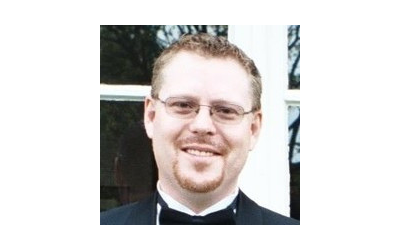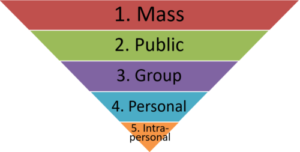
The Practicalities of Patron Data
At Orchestras Canada’s Ontario Small Budget Orchestras Workshop on November 3rd, we heard from Phil Stephens, an experienced arts marketer and fundraiser who has worked with a number of Toronto-area arts organizations including Tafelmusik Baroque Orchestra, the Canadian Opera Company, Tapestry Opera, and the Toronto Bach Festival.
Phil addressed not only the “what”, “how” and “why” of collecting patron data, but also how smart arts groups of all sizes are using patron data to connect better with audiences and grow revenues.
What to collect?
Phil stresses that the more information you have about your patrons, the better you can engage with them. Invest the time in keeping patron data up to date: the best-crafted subscription renewal package won’t do you any good if it’s sent to an out of date address. Understand and acknowledge patrons’ preferences, so that you aren’t wasting time and money on people who have no interest in being contacted.
He specifically recommends that you collect, maintain and protect the following information on your patrons: Name, email address, mailing address, phone number(s), ticket purchase and/or donation history, where they work, how they became involved with your organization, what their communication preferences are (online or offline, how often), and which member of your organization they usually communicate with.
It’s also important to ‘clean’ new data as it comes in, to make sure that you aren’t duplicating contact records. Note that approximately 20% of your patron data changes each year, so it’s important to update your records promptly with the precious information that your patrons share with you.
How do you collect patron data?
“Your data is your life”, Phil says. Go out of your way to collect it, keep it relevant, and use it to make decisions. Many organizations will be able to collect patron data from their box office, though some box office service providers are hesitant to share this data. (This subject was explored in another session at this workshop on the legalities of working with patron information.)
Other ways to collect patron data could include: surveys or other name collection exercises at concerts, forms on your website, email surveys (if you have permission to contact your patrons by email). Be clear with patrons about why you’re asking for the information, explicitly ask for their permission to contact them about orchestra events, and respect their wishes.
What can you use patron data for?
In order to know how to use all of this data, it’s necessary to understand something about communication channels. Phil talked about a number of levels of communication, including:
 Mass Communication: information transmitted to multiple people at the same time, such as print, web, radio or television advertisements, blogs, websites or podcasts.
Mass Communication: information transmitted to multiple people at the same time, such as print, web, radio or television advertisements, blogs, websites or podcasts.- Public Communication: information transmitted by one person to a targeted group of people, ranging from a public speaking engagement to an email blast.
- Group Communication: interactions within a small group trying to achieve a shared goal. Focus groups are a great example of group communication.
- Interpersonal Communication: communication between two people who can influence one another. Telemarketing and in-person discussions are two examples.
- Intrapersonal Communication: the crucial inner dialogue that we each engage in as we make large and small decisions.
 It doesn’t take a huge organization to use data effectively. Whatever resources you have, with the right data you can personalize your communications, and engage with people in ways that acknowledge their interests and values. Demonstrate empathy. For example, if a patron has only attended past concerts featuring piano soloists, they will likely appreciate learning about the all-Chopin extravaganza you have coming up. If they’re always at your afternoon concerts, then perhaps they should be direct-mailed about next month’s matinee rather than being telemarketed at dinner-time about subscribing to your evening concert series.
It doesn’t take a huge organization to use data effectively. Whatever resources you have, with the right data you can personalize your communications, and engage with people in ways that acknowledge their interests and values. Demonstrate empathy. For example, if a patron has only attended past concerts featuring piano soloists, they will likely appreciate learning about the all-Chopin extravaganza you have coming up. If they’re always at your afternoon concerts, then perhaps they should be direct-mailed about next month’s matinee rather than being telemarketed at dinner-time about subscribing to your evening concert series.
Knowing your patrons better is also helpful when making your case to sponsors and funders. They want to know about your community impact!
Finally, having multiple avenues of communication can be important in increasing the responses to your campaigns. Phil presented a case study based on a Canadian Opera Company campaign, in which they tested email, direct mail and combined approaches to converting single ticket buyers into season subscribers. Some single ticket buyers received email messages only, some received hard copy direct mail, and some got both. The purchase response from the email-only group was 3-4%, the direct mail-only group was 10-15%, and those who received both responded at a rate of 30%!
While direct mail is more expensive, it’s clear that multiple communication channels can promote higher response rates. And those channels are only available to organizations that collect, protect, and maintain their patron data.
We’d like to thank Phil Stephens for sharing his time and expertise with OC and our members.

 Mass Communication: information transmitted to multiple people at the same time, such as print, web, radio or television advertisements, blogs, websites or podcasts.
Mass Communication: information transmitted to multiple people at the same time, such as print, web, radio or television advertisements, blogs, websites or podcasts.